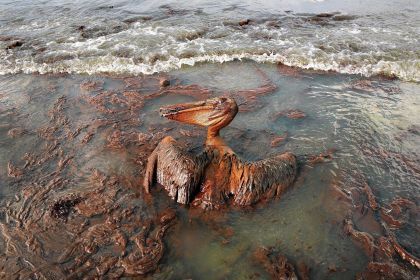An online map that pinpoints hopeful restoration projects that stem from 2010’s Deepwater Horizon explosion and catastrophic oil spill is more than a routine exercise in government transparency. It's more like an X-ray. And the patient is Florida.
 State Department of Environmental Protection officials recently announced $34.4 million in spending for phase five of statewide restoration projects. The projects were approved by a council of trustees that serve the National Oceanic and Atmospheric Administration.
State Department of Environmental Protection officials recently announced $34.4 million in spending for phase five of statewide restoration projects. The projects were approved by a council of trustees that serve the National Oceanic and Atmospheric Administration.
According to NOAA, efforts to repair Gulf Coast eco damage from Deepwater focus on marine species, habitats, and recreational uses, including sea turtles, marine mammals, shellfish, birds, coral reefs, land-based wildlife, and recreational fishing and boating.
The oil spill fouled 1,300 miles of Gulf coastlines and BP agreed to pay more than $20 billion in penalties last year. Florida’s share is reportedly more than $3.2 billion to be paid over 18 years.
Florida’s project map is updated monthly, according to the DEP. A link is also available on The Daily Fray’s menu.
Outside
Bitcoin mining emissions in China will hit 130 million tonnes by 2024 https://t.co/w6He7so8N2 pic.twitter.com/qYUDtBdeRK
— New Scientist (@newscientist) April 9, 2021
The Gunk Report
For the Blue-Green Algal Bloom Weekly Update from the Florida Department of Environmental Protection, tap here. For DEP's Algal Bloom Sampling Map, tap here.
What, me worry?
» "PLAYING WITH SHARKS," which recently premiered at the Sundance Film Festival, documents diving legend Valerie Taylor.